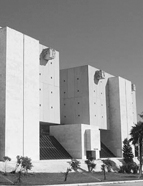

................................
The Torre do Tombo National Archive, as it exists today, is a public institution responsible for safeguarding “a diverse universe of archival heritage, including original documents dating from the 9th century to the present, in a wide variety of formats, fulfilling its primary mission of preservation, enhancement, and dissemination of this heritage” ( ). It has undergone significant transformations since its origins in the medieval period, gradually evolving into its modern form by the early 19th century, when its current profile began to take shape.
The earliest known reference to the existence of a fixed archive for storing the documents of the Portuguese Crown, located in one of the towers of São Jorge Castle in Lisbon, dates back to 1378. João Pedro Ribeiro, in his Memorias authenticas para a historia do Real Archivo [Authentic Memoirs for the History of the Royal Archive] notes that “(...) during the reign of King Fernando, on 4 November of the Era of 1416, the Overseer of the Chancellery issued a Provision to João Annes, Overseer of the Treasury, to issue a Certificate from the Tower of the Castle of Lisbon...” ( Memorias authenticas… , 1819, p. 13). However, some authors argue that the Crown’s archive was established in Lisbon earlier, around the time Portuguese monarchs established their residence there, during the reign of King Afonso III or shortly thereafter, during the reign of King Dinis.
Among those suggesting the reign of King Fernando as the period when the Crown's archive was established at São Jorge Castle are João Pedro Ribeiro ( Idem , 1819), José Silvestre Ribeiro ( Historia dos estabelecimentos… [History of the scientific, literary and artistic establishments...], 1871, pp. 328-329), J. de Vilhena Barbosa ( Creação dos archivos na Europa [Creation of archives in Europe], 1874), Pedro de Azevedo and António Baião ( O Arquivo da Torre do Tombo [The Torre do Tombo Archive], 1989 [1905]), as well as more recent authors such as António Cruz ( Arquivos portugueses [Portuguese archives] [1975]) and José Pereira da Costa ( Torre do Tombo , 1994), who rely on earlier works as sources. Others date the archive's establishment further back, particularly to the reign of King Dinis, though without documentary evidence. Examples include Cristóvão Benavente, a scribe at Torre do Tombo, who authored a report in 1583 on the order of Philip II (A. J. D. Dinis, “Relatório…” ["Report..."]1968, pp. 152-158); José Pedro Miranda Rebelo, author of Extracto do Real Archivo da Torre do Tombo… [ Extract from the Torre do Tombo Royal Archive...] written in the late 18th century (1904 [post-1776], pp. 6-7); and José Pessanha, who suggests that “ “the establishment of the royal archive likely coincided with the relocation of our monarchs’ residence to Lisbon , in the famous rocky palace of Alcaçova (…)” (J. Pessanha, “A Torre do Tombo”, 1906, p. 459). José Pereira da Costa (1980) similarly considers it highly probable that the royal archive was located in the Torre da Escrivaninha until 1378, when it was moved to the albarran tower of Lisbon 's Castle.
This work is financed by national funds through FCT - Foundation for Science and Technology, I.P, in the scope of the projects UIDB/04311/2020 and UIDP/04311/2020.
